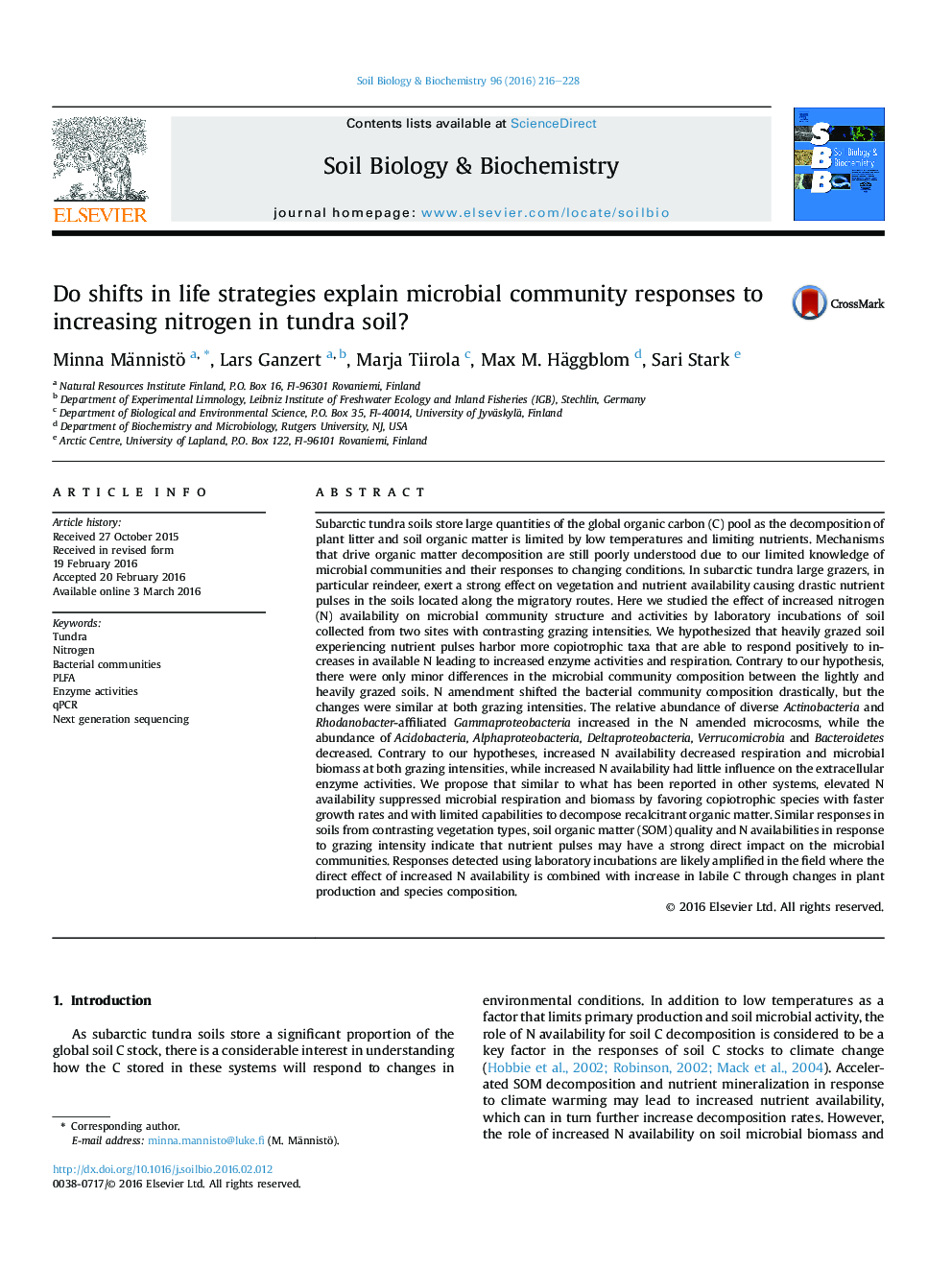| کد مقاله | کد نشریه | سال انتشار | مقاله انگلیسی | نسخه تمام متن |
|---|---|---|---|---|
| 2024365 | 1542588 | 2016 | 13 صفحه PDF | دانلود رایگان |
• Similar bacterial community structure in soils under different grazing intensities.
• N amendment decreased respiration in tundra soil.
• N amendment decreased biomass but increased rRNA copy numbers per unit DNA.
• Copiotrophic taxa were more abundant in N amended soils.
Subarctic tundra soils store large quantities of the global organic carbon (C) pool as the decomposition of plant litter and soil organic matter is limited by low temperatures and limiting nutrients. Mechanisms that drive organic matter decomposition are still poorly understood due to our limited knowledge of microbial communities and their responses to changing conditions. In subarctic tundra large grazers, in particular reindeer, exert a strong effect on vegetation and nutrient availability causing drastic nutrient pulses in the soils located along the migratory routes. Here we studied the effect of increased nitrogen (N) availability on microbial community structure and activities by laboratory incubations of soil collected from two sites with contrasting grazing intensities. We hypothesized that heavily grazed soil experiencing nutrient pulses harbor more copiotrophic taxa that are able to respond positively to increases in available N leading to increased enzyme activities and respiration. Contrary to our hypothesis, there were only minor differences in the microbial community composition between the lightly and heavily grazed soils. N amendment shifted the bacterial community composition drastically, but the changes were similar at both grazing intensities. The relative abundance of diverse Actinobacteria and Rhodanobacter-affiliated Gammaproteobacteria increased in the N amended microcosms, while the abundance of Acidobacteria, Alphaproteobacteria, Deltaproteobacteria, Verrucomicrobia and Bacteroidetes decreased. Contrary to our hypotheses, increased N availability decreased respiration and microbial biomass at both grazing intensities, while increased N availability had little influence on the extracellular enzyme activities. We propose that similar to what has been reported in other systems, elevated N availability suppressed microbial respiration and biomass by favoring copiotrophic species with faster growth rates and with limited capabilities to decompose recalcitrant organic matter. Similar responses in soils from contrasting vegetation types, soil organic matter (SOM) quality and N availabilities in response to grazing intensity indicate that nutrient pulses may have a strong direct impact on the microbial communities. Responses detected using laboratory incubations are likely amplified in the field where the direct effect of increased N availability is combined with increase in labile C through changes in plant production and species composition.
Journal: Soil Biology and Biochemistry - Volume 96, May 2016, Pages 216–228
